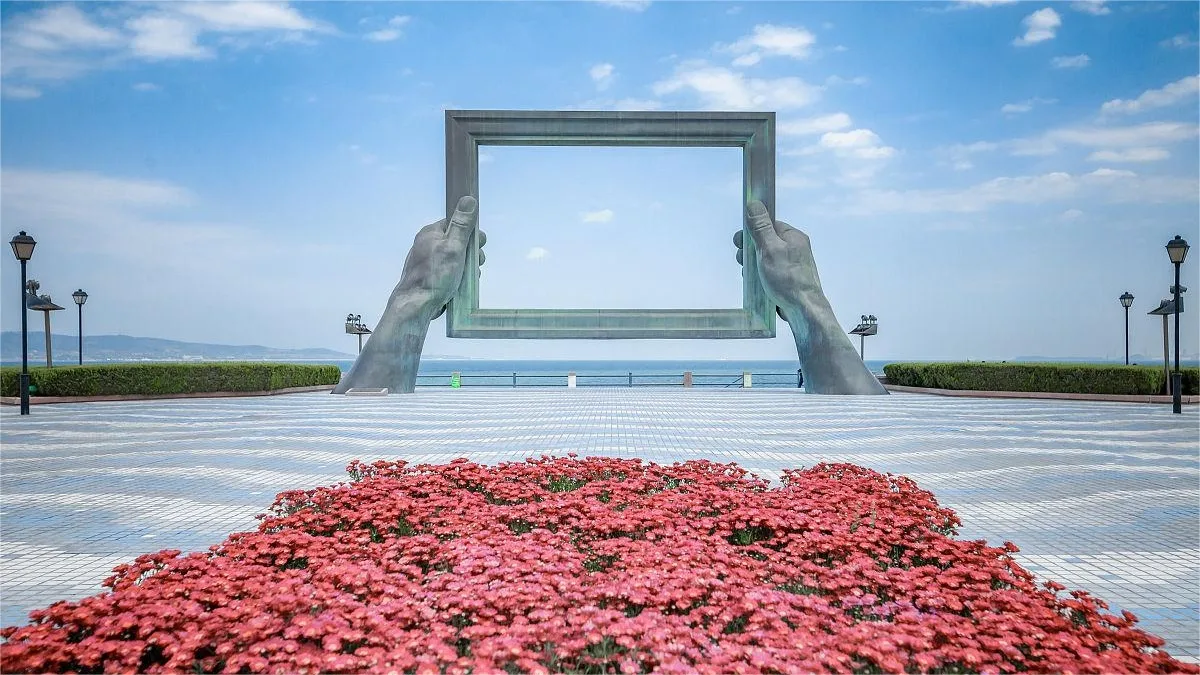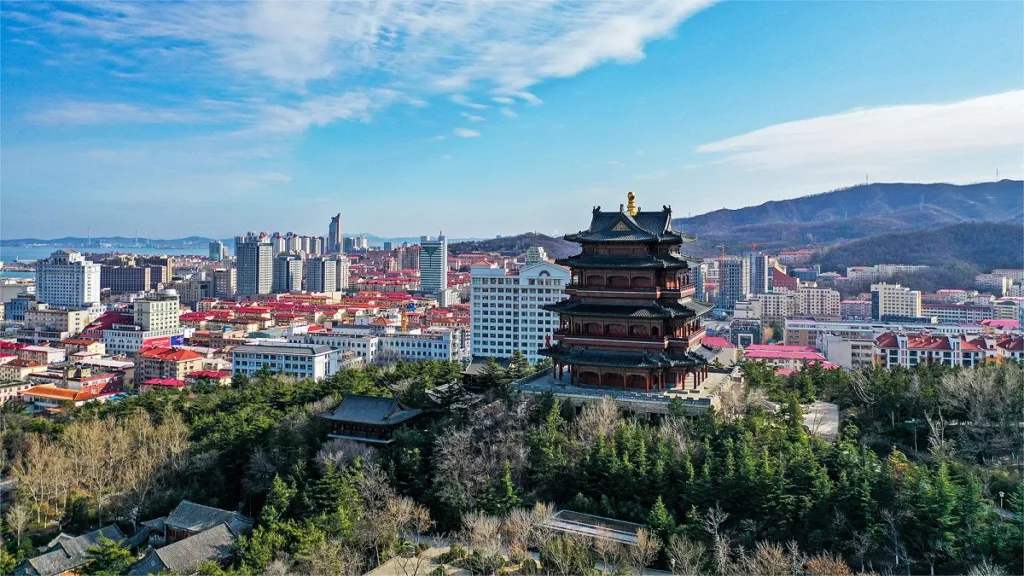Weihai Park (威海公园) is one of the largest coastal parks in Chinese cities. Spanning a total length of 3,218.6 meters and an average width of 144.3 meters, the park covers a total area of 465,000 square meters on both sides of Haibin South Road.
In the middle of the park, there is a central cultural square, which is accompanied by four main scenic areas arranged from north to south. Corresponding to the central square and these scenic areas, the park features one large main sculpture, four thematic sculptures for each scenic area, and several smaller sculptures.
The park’s landscaping follows the principles of ecological garden design, utilizing native tree species as the framework. This results in a clear hierarchy, with varying densities and a harmonious arrangement, creating an ecological community that showcases the richness and diversity of plant species. The entire park is shaded by lush trees and adorned with vibrant flowers.
The combination of the sea, forests, greenery, flowers, sculptures, rocks, and buildings creates a picturesque scene, reflecting the beauty of an ecological coastal city. The seamless integration of these elements makes Weihai Park a beautiful and serene place for visitors to enjoy.
Table of Contents
- Basic Information
- Location and Transportation
- History of Weihai Park
- Vlog about Weihai Park
- Other Attractions in Weihai Urban Area
Basic Information
| Estimated Length of Tour | 1 hour |
| Ticket Price | Free |
| Opening Hours | 24 hours a day throughout the year |
Location and Transportation
Weihai Park is located at 29 Haibin Middle Road, Huancui District, Weihai City, Shandong Province. The park stretches from Sifang Road in the north to Pingdu Road in the south, facing Weihai Bay. To get there, you can take bus 10, K7, or K8 and get off at Weihai Park Stop (威海公园站).
History of Weihai Park
Weihai Park, located in Weihai, China, has a rich history dating back to the period of British leasehold over Weihaiwei. During this time, the British established a commercial district near the harbor, with government offices and commercial facilities situated around the pier. The nearby Dongshan Fort, where the Dongshan Hotel is now located, was naturally beautiful with its seaside and mountainous scenery. It quickly became a popular spot for both foreign visitors and local residents to relax, take walks, and enjoy the ocean views. The area was abundant with trees and flowers, creating a scenic environment.
In 1928, leveraging the existing natural beauty, the British undertook a project to formalize this area into a park. They laid out pathways, installed benches, and added more trees and flower varieties. The park, though relatively simple, was officially opened to the public on June 4, 1928.
After Weihaiwei was returned to Chinese control, the park saw significant development under Xu Dongfan, the commissioner of the Weihaiwei Administration Office, in February 1934. The park was greatly expanded and enhanced, covering an area of 46,000 square meters. At the highest point of the park, a grand hall named Wangyun Pavilion was constructed, capable of accommodating 300 people, making it the only large hall in Weihai at the time. The roof platform of the hall offered a superb vantage point for viewing the scenery and featured a colorful pavilion named Changfeng Pavilion. The park also included a sports field with various athletic equipment, six groves, eight orchards, 16 flower gardens, and two lawns. The extensive renovation was completed in July of the same year, with a grand opening ceremony held on July 15, officially naming it Weihai Park.
Weihai Park’s prime location contributed to its popularity. To its west was the King’s Hotel, operated by the British, Duncan Clarke. Built in 1900, the hotel boasted over 80 rooms and various recreational facilities, including a billiard room and tennis courts. It was the most luxurious hotel in Weihai at the time and a favored accommodation for important Chinese and foreign guests. Consequently, Weihai Park became a must-visit spot for these dignitaries. In the three years following the park’s opening, Weihai’s tourism industry flourished, with nearly ten thousand British Royal Navy personnel visiting each summer.
However, disaster struck in March 1938 when Japanese forces invaded Weihai. The park, along with the city, suffered extensive damage. In August 1945, as the Japanese forces retreated, they bombed Weihai Park, destroying Wangyun Pavilion and reducing the King’s Hotel to rubble. The park was left scarred and in ruins, with its original splendor lost after just 17 years of existence.
After decades of neglect and damage, Weihai Park underwent a major reconstruction effort starting in February 2000. The restoration was completed on May 31, 2001, and the park was officially reopened on June 1, 2001.





